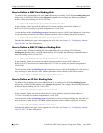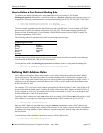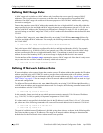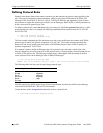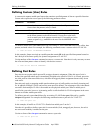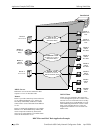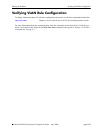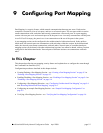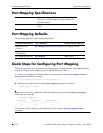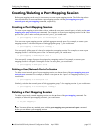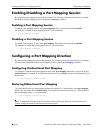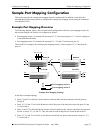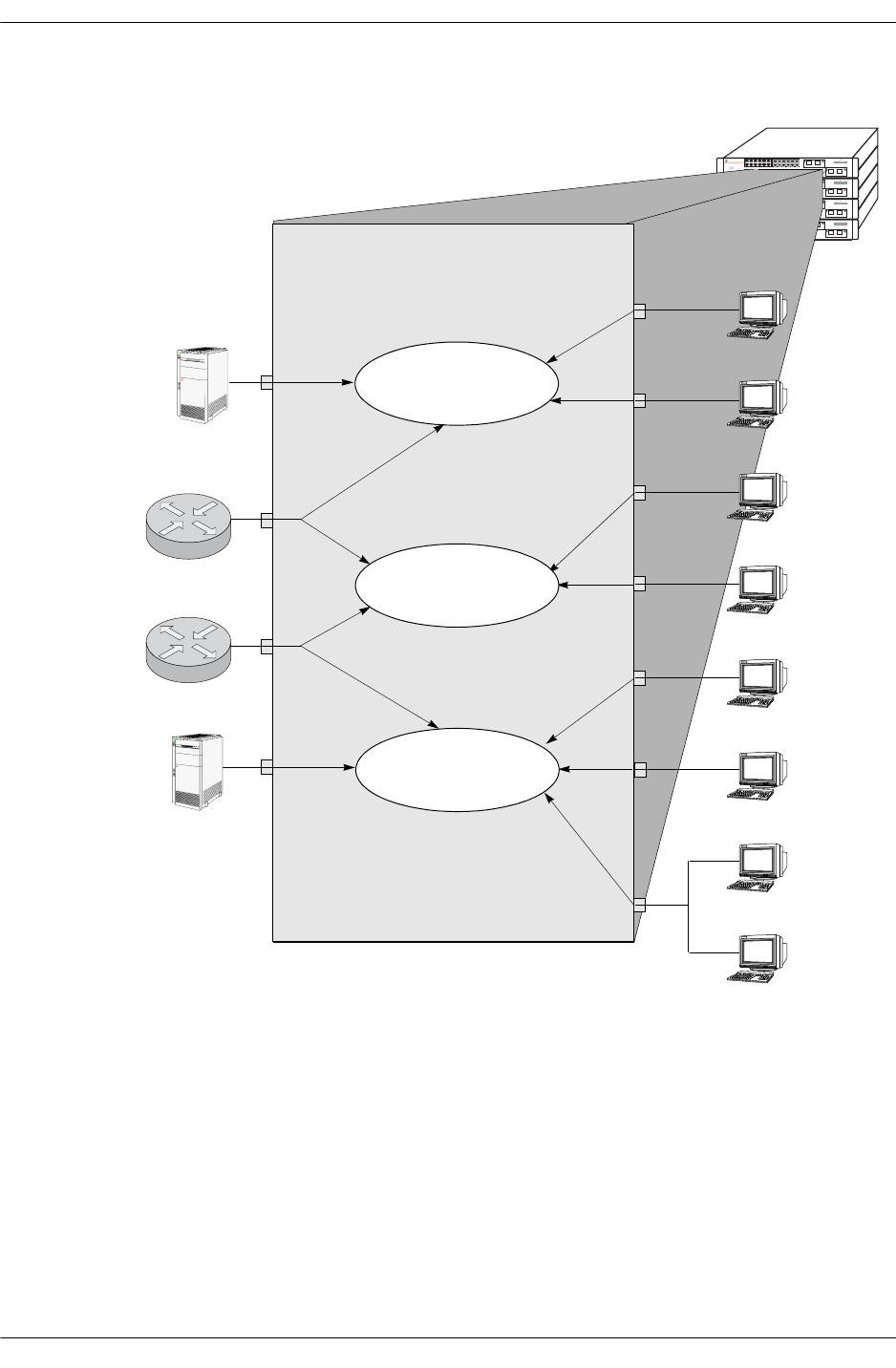
Application Example: DHCP Rules Defining VLAN Rules
page 8-24 OmniSwitch 6600 Family Network Configuration Guide April 2006
DHCP Port and MAC Rule Application Example
OmniSwitch 6648
OmniSwitch 6648
OmniSwitch 6648
OmniSwitch 6648
OmniSwitch
Client 1
DHCP Port
Rule
Client 2
DHCP Port
Rule
Client 3
DHCP
Port Rule
Client 4
DHCP
Port Rule
Client 5
DHCP
Port Rule
Server 1
10.15.14.16
Server 2
10.13.15.17
Router 2
DHCP
Relay On
Router 1
No DHCP
Relay
Client 7
DHCP
MAC
Client 6
DHCP
Port Rule
Client 8
DHCP
MAC
Branch VLAN
IP Subnet 10.13.X.X
DHCP Port/MAC Rules
Production VLAN
IP Subnet 10.15.128.X
DHCP Port Rules
Test VLAN
IP Subnet 10.15.X.X
DHCP Port Rules
DHCP Servers
Both DHCP servers become members in their
respective
VLANs via IP subnet rules.
Routers
Router 1 provides connectivity between the Test
VLAN and the Production VLAN. It does not
have Bootp functionality enabled so it cannot
connect
DHCP servers and clients from different
VLANs.
Router 2 connects the Production
VLAN and the
Branch
VLAN. With DHCP Relay enabled, this
router can provide connectivity between the
DHCP server in the Branch VLAN and the DHCP
clients in the Production VLAN.
DHCP Clients
Clients 1 to 6 are assigned to their respective
VLANs through DHCP port rules. Clients 3 and
4 are not in a
VLAN with a DHCP server so they
must rely on the server in the Branch VLAN for
initial addressing information. Clients 7 and 8
share a port with other devices, so they are
assigned to the Branch
VLAN via DHCP MAC
address rules.



